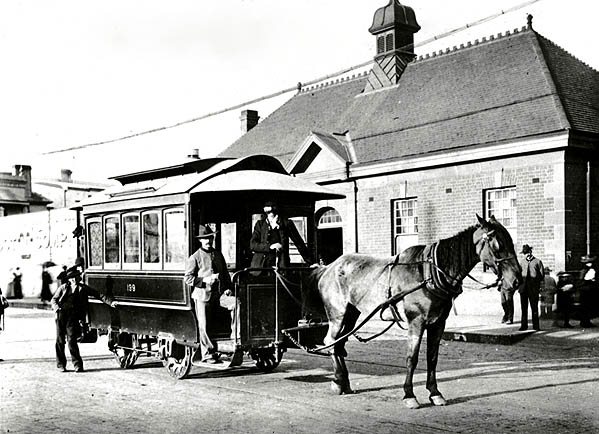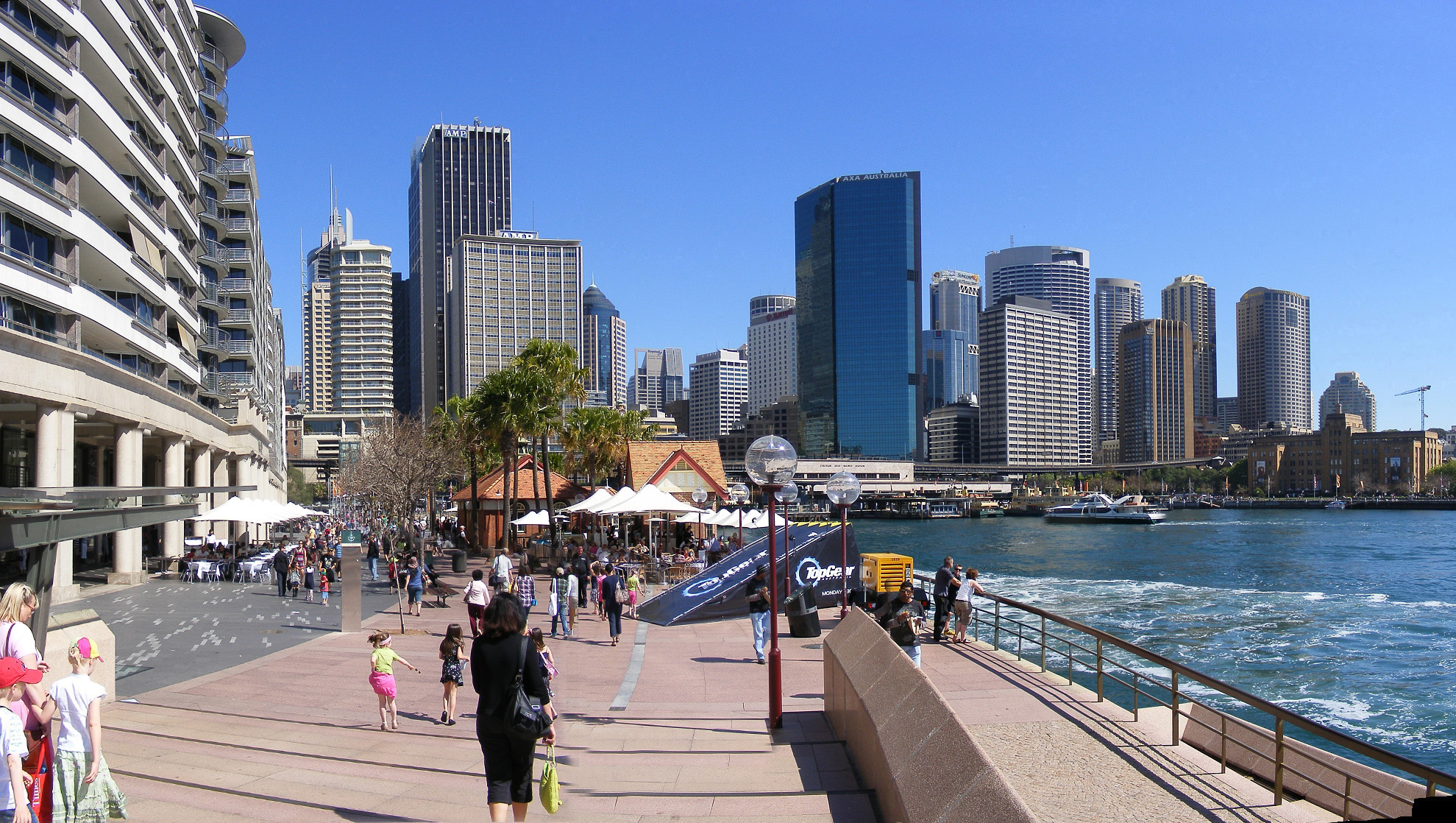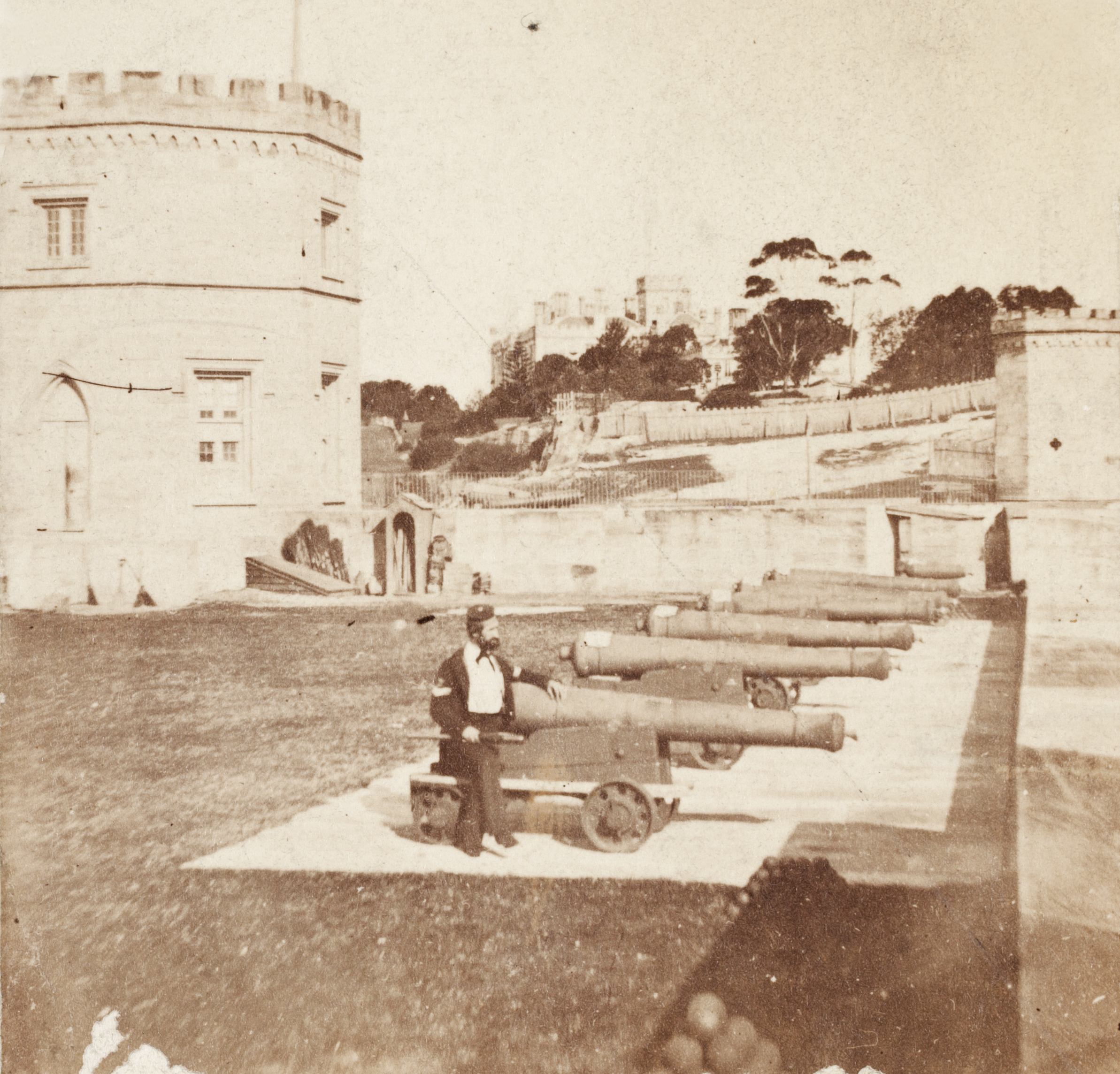|
Bennelong Point
Bennelong Point, a former island in Sydney Harbour, is a headland that, since the 1970s is the location of the Sydney Opera House in Sydney, New South Wales, Australia. History Bennelong Point is known to the local Gadigal people of the Eora nation as ''Dubbagullee''. The point was originally a small tidal island, Bennelong Island, that largely consisted of rocks with a small beach on the western side. The island was located on the tip of the eastern arm of Sydney Cove and was apparently separated from the mainland at high tide. For a brief period in 1788, this relatively isolated protrusion into Port Jackson (Sydney's natural harbour) was called Cattle Point as it was used to confine the few cattle and horses that had been brought from Cape Town by Governor Arthur Phillip with the First Fleet. The area at that time was also strewn with discarded oyster shells from many long years of gathering by the local aboriginal women. Those shells were regathered by the newly arrived ... [...More Info...] [...Related Items...] OR: [Wikipedia] [Google] [Baidu] |
Headland
A headland, also known as a head, is a coastal landform, a point of land usually high and often with a sheer drop, that extends into a body of water. It is a type of promontory. A headland of considerable size often is called a cape.Whittow, John (1984). ''Dictionary of Physical Geography''. London: Penguin, 1984, pp. 80, 246. . Headlands are characterised by high, breaking waves, rocky shores, intense erosion, and steep sea cliff. Headlands and bays are often found on the same coastline. A bay is flanked by land on three sides, whereas a headland is flanked by water on three sides. Headlands and bays form on discordant coastlines, where bands of rock of alternating resistance run perpendicular to the coast. Bays form when weak (less resistant) rocks (such as sands and clays) are eroded, leaving bands of stronger (more resistant) rocks (such as chalk, limestone, and granite) forming a headland, or peninsula. Through the deposition of sediment within the bay and the erosion ... [...More Info...] [...Related Items...] OR: [Wikipedia] [Google] [Baidu] |
The Fatal Shore
''The Fatal Shore: The Epic of Australia's Founding'' by Robert Hughes is a history of the early years of British colonisation of Australia, and especially the history and social effects of Britain's convict transportation system. It also addresses the historical, political and sociological reasons that led to British settlement. It was first published in 1986. Hughes was an Australian man who became an internationally well-known art critic, living in Europe and then New York, where he became art critic for ''Time'' magazine. Hughes's interest in Australia's convict era began in the early 1970s, when he was filming a TV documentary about the history of Australian art that took him to Port Arthur in Tasmania. Awards * 1987 Duff Cooper Prize. * 1988 WH Smith Literary Award. Publication history ''The Fatal Shore'' was originally published in 1986 by Alfred A. Knopf in the United States and by William Collins in the UK, and subsequently published in paperback the UK by Collin ... [...More Info...] [...Related Items...] OR: [Wikipedia] [Google] [Baidu] |
Sydney Localities
Sydney ( ) is the capital city of the state of New South Wales, and the most populous city in both Australia and Oceania. Located on Australia's east coast, the metropolis surrounds Sydney Harbour and extends about towards the Blue Mountains to the west, Hawkesbury to the north, the Royal National Park to the south and Macarthur to the south-west. Sydney is made up of 658 suburbs, spread across 33 local government areas. Residents of the city are known as "Sydneysiders". The 2021 census recorded the population of Greater Sydney as 5,231,150, meaning the city is home to approximately 66% of the state's population. Estimated resident population, 30 June 2017. Nicknames of the city include the 'Emerald City' and the 'Harbour City'. Aboriginal Australians have inhabited the Greater Sydney region for at least 30,000 years, and Aboriginal engravings and cultural sites are common throughout Greater Sydney. The traditional custodians of the land on which modern Sydney stands are ... [...More Info...] [...Related Items...] OR: [Wikipedia] [Google] [Baidu] |
Headlands Of New South Wales
A headland, also known as a head, is a coastal landform, a point of land usually high and often with a sheer drop, that extends into a body of water. It is a type of promontory. A headland of considerable size often is called a cape.Whittow, John (1984). ''Dictionary of Physical Geography''. London: Penguin, 1984, pp. 80, 246. . Headlands are characterised by high, breaking waves, rocky shores, intense erosion, and steep sea cliff. Headlands and bays are often found on the same coastline. A bay is flanked by land on three sides, whereas a headland is flanked by water on three sides. Headlands and bays form on discordant coastlines, where bands of rock of alternating resistance run perpendicular to the coast. Bays form when weak (less resistant) rocks (such as sands and clays) are eroded, leaving bands of stronger (more resistant) rocks (such as chalk, limestone, and granite) forming a headland, or peninsula. Through the deposition of sediment within the bay and the erosion of th ... [...More Info...] [...Related Items...] OR: [Wikipedia] [Google] [Baidu] |
Sydney Harbour
Port Jackson, consisting of the waters of Sydney Harbour, Middle Harbour, North Harbour and the Lane Cove and Parramatta Rivers, is the ria or natural harbour of Sydney, New South Wales, Australia. The harbour is an inlet of the Tasman Sea (part of the South Pacific Ocean). It is the location of the Sydney Opera House and Sydney Harbour Bridge. The location of the first European settlement and colony on the Australian mainland, Port Jackson has continued to play a key role in the history and development of Sydney. Port Jackson, in the early days of the colony, was also used as a shorthand for Sydney and its environs. Thus, many botanists, see, e.g, Robert Brown's '' Prodromus Florae Novae Hollandiae et Insulae Van Diemen'', described their specimens as having been collected at Port Jackson. Many recreational events are based on or around the harbour itself, particularly Sydney New Year's Eve celebrations. The harbour is also the starting point of the Sydney to Hob ... [...More Info...] [...Related Items...] OR: [Wikipedia] [Google] [Baidu] |
Trams In Sydney
The Sydney tramway network served the inner suburbs of Sydney, Australia from 1879 until 1961. In its heyday, it was the largest in Australia, the second largest in the Commonwealth of Nations (after London), and one of the largest in the world. The network was heavily worked, with about 1,600 cars in service at any one time at its peak during the 1930s (cf. about 500 trams in Melbourne today). Patronage peaked in 1945 at 405 million passenger journeys. Its maximum street trackage totalled 291 km (181 miles) in 1923. History Early tramways Sydney's first tram was horse-drawn, running from the old Sydney railway station to Circular Quay along Pitt Street.''The 1861 Pitt Street Tramway and the Contemporary Horse Drawn Railway Proposals'' Wylie, R.F. Australian Railway Historical Society Bulletin, February, 1965 pp21-32 Built in 1861, the design was compromised by the desire to haul railway freight wagons along the line to supply city businesses and return cargo from ... [...More Info...] [...Related Items...] OR: [Wikipedia] [Google] [Baidu] |
Man O'War Steps
The Man O'War Steps is a heritage-listed jetty located at Farm Cove Crescent, in the Sydney central business district, in the City of Sydney local government area of New South Wales, Australia. It was built from 1810. The property is owned by Transport for NSW. It was added to the New South Wales State Heritage Register on 18 April 2000. The Steps are located on the eastern bank of Bennelong Point, adjacent to the Sydney Opera House and on the north-western boundary of the Royal Botanic Garden. History This 'small landing place' appears to have been a wooden construction of approximately the same configuration as the existing jetty. It enclosed a small beach and protected boat harbour, which became known temporarily as "Port Lachlan," after Macquarie's son Lachlan. Gradually the jetty was repaired and improved, and ceased to be reserved for the exclusive use of the Governor. By 1850, it was referred to by the Admiralty as a "stone pier," and stated to be in use for waterin ... [...More Info...] [...Related Items...] OR: [Wikipedia] [Google] [Baidu] |
Sydney Rowing Club
Sydney Rowing Club is the oldest rowing club in New South Wales, Australia formed in 1870. It has occupied its current site on Port Jackson's Parramatta River at Abbotsford, New South Wales, Abbotsford Point since 1874. The club has a focus on its high performance and elite rowing programs and as of the 2021 Olympic Games, sixty-eight rowers from the club had competed at the Olympic Games rowing in one hundred and two of the seats raced by Australian Olympic crews. Over one hundred club members have achieved national selection. Club history A group of sportsmen interested in the advancement of amateur rowing met at the Oxford Hotel in Sydney on 6 March 1870 and the Sydney Rowing club was born. George Thornton (Australian politician), George Thornton a former mayor of Sydney was the club's first President. Its first club house was on a site adjacent to the current Sydney Opera House at Bennelong Point, New South Wales, Bennelong Point. That clubhouse was opened in August 1870 by Hi ... [...More Info...] [...Related Items...] OR: [Wikipedia] [Google] [Baidu] |
Bennelong Point, New South Wales
Bennelong Point, a former island in Sydney Harbour, is a headland that, since the 1970s is the location of the Sydney Opera House in Sydney, New South Wales, Australia. History Bennelong Point is known to the local Gadigal people of the Eora nation as ''Dubbagullee''. The point was originally a small tidal island, Bennelong Island, that largely consisted of rocks with a small beach on the western side. The island was located on the tip of the eastern arm of Sydney Cove and was apparently separated from the mainland at high tide. For a brief period in 1788, this relatively isolated protrusion into Port Jackson (Sydney's natural harbour) was called Cattle Point as it was used to confine the few cattle and horses that had been brought from Cape Town by Governor Arthur Phillip with the First Fleet. The area at that time was also strewn with discarded oyster shells from many long years of gathering by the local aboriginal women. Those shells were regathered by the newly arrived conv ... [...More Info...] [...Related Items...] OR: [Wikipedia] [Google] [Baidu] |
Fort Macquarie Tram Depot
Fort Macquarie Tram Depot was part of the Sydney tram network. It opened in 1902 on the site of the old Fort Macquarie and was demolished in 1958 to make way for the construction of the Sydney Opera House. History Fort Macquarie Tram Depot was built on Bennelong Point in Sydney opening on 10 August 1902, on the site of the old Fort Macquarie. The depot was constructed in the design of a fortress with castellated ramparts in homage to the previous building. The depot closed on 22 October 1955 before being demolished in 1958 to make way for the construction of the Sydney Opera House. With the closing of Fort Macquarie depot, most of the services were transferred to Dowling Street depot. Design *12 tracks *Battlement style front parapet *Brick pediments, vents within false windows *Roof orientation to south Operations The depot consisted of a 12 road shed, with loop line laid around the outside. The loop and sidings on the western side of the depot were an important lay-over poi ... [...More Info...] [...Related Items...] OR: [Wikipedia] [Google] [Baidu] |
Sydney Cove
Sydney Cove ( Eora: ) is a bay on the southern shore of Sydney Harbour, one of several harbours in Port Jackson, on the coast of Sydney, New South Wales. Sydney Cove is a focal point for community celebrations, due to its central Sydney location between the Sydney Opera House and the Sydney Harbour Bridge. It is also one of the main congregation points for Sydney New Year's Eve. History The Eora name for Sydney Cove was recorded by several early settlers of the First Fleet variously spelt as Warrane, War-ran, Warrang and Wee-rong. The spot is of great significance, as the first meeting place between Eora people and Europeans. Before colonisation of the area, Eora men speared fish from the shoreline, and women line-fished from their ' (canoes). Sydney Cove was named after the British Home Secretary, the 1st Baron Sydney (who was later created 1st Viscount Sydney in 1789). It was the site chosen by Captain Arthur Phillip, RN between 21 and 23 January 1788 for the Brit ... [...More Info...] [...Related Items...] OR: [Wikipedia] [Google] [Baidu] |
Fort Macquarie
Fort Macquarie was a square castellated battlement fort built in 1798 at Bennelong Point, Sydney, New South Wales, Australia, on the site where the Sydney Opera House now stands. It was demolished in 1901 to make way for the Fort Macquarie Tram Depot. History The original name of Bennelong Point, the finger of land on which Fort Macquarie was built, was Inbughalee (djubuguli), Farm Cove was Yoolaugh and Sydney Cove was Warane. On 25 November 1789 an Aboriginal man named Bennelong was captured and brought to Governor Arthur Phillip. Eventually three huts were built on this spit of land for Bennelong, his wife Bangaroo, and other Indigenous visitors.Vanishing Sydney 2 March 1901, The Sydney Mail and New South Wales Advertiser (NSW : 1871 - 1912), p. 539. Retrieved July 16, 2020. The first attempt at fortifications were erected her ... [...More Info...] [...Related Items...] OR: [Wikipedia] [Google] [Baidu] |









